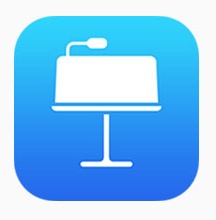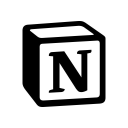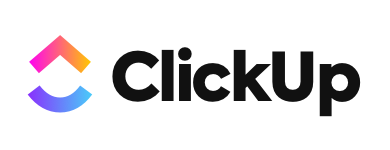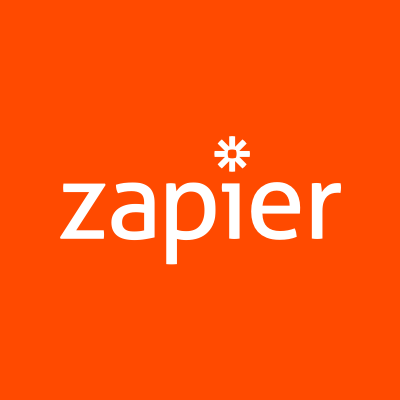How These Former Resellers Built A $120K/Year Tool To Combat Bots
Hello! Who are you and what business did you start?
Howdy! My name is Jordan Shamir, and I am one of the co-founders of Yofi, a customer identity platform that helps brands prevent bots and create meaningful relationships with their customers! My co-founders and I started Yofi because we were frustrated constantly needing to pay ridiculous resale prices for our favorite sneakers and concert tickets because we couldn’t beat the bots who were buying all of these items.
We are all former sneaker botters, who gave up our botting ways to help some of the largest brands in the world - Nike, Adidas, IBM, and Gucci - successfully fight against these bots. While fighting against bots, we uncovered a more significant issue: everything being consumed digitally is being skewed because everyone has multiple identities online - intentionally (bots, fraudsters, resellers) and unintentionally (people using their work email for 10-15% off promotion).
This creates a massive cascading impact because skewed data led to miss forecasting sales and inventory, abandoning successful marketing campaigns, and building products our customers did not want.
Yofi has helped brands successfully mitigate bad actors (bots, serial returners, and arbitrageurs), eliminate unnecessary software expenses, and cultivate meaningful relationships with their customers.
We have stopped 51 million bot checkouts during November and December alone and have grown to 46 downloads in Shopify! We have increased our customers’ clickthrough rate by 67%, grew their customer lifetime value by 12%, and acquired 100s of new customers a month through raffles.

I always recommend looking for customers with a “hair on fire” problem, as many brands are willing to take a chance on a startup if the problem is large enough.
What's your backstory and how did you come up with the idea?
I have always loved building, whether slyly reselling Skittles in my elementary school in Singapore or curating the largest database of private school student rankings. I was constantly tinkering with new ideas and side projects, where I loved taking ideas and making them a reality. I attempted a career in Investment Banking but quickly realized that my passion was outside banking and joined IBM as a Product Manager, where I built a startup within IBM. I took the newly-inked partnership and built a platform that hosted some of the largest companies in the world and grew to $350M in ARR within four years.
One day, Alex, my sister, and co-founder called to tell me about her experience with bots and digital identity. She had been fighting bots and attempting to make data-driven decisions but was unable to since all of their data was so significantly skewed by customers. The more we investigated, the more obsessed with the idea we became because we were solving an issue for brands and their customers!
Everyone has been frustrated by needing to pay a ridiculous resale markup for their favorite concert tickets, sporting events, or products. When we started botting, it was mainly for concert tickets and sneakers, but it has quickly exploded to encompass any product that people can profit from. In 2021, 35.7% of online Black Friday Shoppers were bots and fake accounts, which we knew significantly impacted both brands and consumers. The problem was rapidly getting worse; thus, we decided to start Yofi!
Take us through the process of building the first version of your product.
When we started, our name was BotNot, and we were solely focused on preventing sneaker bots from winning limited-release raffles. We chose to support Shopify as our first platform because it is one of the most targeted platforms by bots, and many of the sneaker stores on Shopify do not have the budget for enterprise solutions.
We myopically focused on flagging and preventing bots for these customers; thus, we built and centered our portal around “good” and “bot” customers. Fortunately, we could do this incredibly well, allowing us to onboard many pilot customers who bought into our vision and benefitted their business.

These initial customers were invaluable by providing us with feedback, insights, and confidence that we are building a platform that significantly benefits them. Once we solved one task with them, we would continue brainstorming ways to take our platform to the next level. Through these customers, we could see the problem was much larger than exclusive and limited-release items – they struggled to understand their customer's digital identity and the best way to interact with them.
People WANT to help you. We were shocked by the number of people that took our cold calls and friends willing to make introductions for us.
Describe the process of launching the business.
We created a strategic rollout for our launch, as we segmented the potentially interested customers into the most friendly and valuable. We launched our prototype in 5 stores and scheduled a regular cadence to get their feedback to improve the platform. Once we felt comfortable and expanded the number of customers to 12 stores to improve the product before publicly releasing it.
We publicly released Yofi on the Shopify App Store on August 6th, 2022, two months after expanding to 12 stores! For the public release, we focused on getting as many “eyeballs” on our announcement blog as possible. We coordinated a large group of customers, investors, and fans of Yofi to share our announcement on their social media, which helped us gain close to a million impressions on LinkedIn and 10,000 unique visitors to our site!

The biggest lesson I learned from launching Yofi was being comfortable with being vulnerable, as it is scary to put “your baby” in the hands of other people. There are a lot of imperfections and things that you would like to improve on but know the only way to get better is by releasing the product. Many times, you, as a founder, are over-critical, and the product is better than you think - I was surprised by the amount of support we received from people!
Since launch, what has worked to attract and retain customers?
Our best approach for attracting and retaining customers has been by finding a niche of customers so that our product solves an immediate problem. We are experts in the bot space and still have access to the groups where bots target specific stores and items.
We see the stores constantly targeted by botters and send them an email offering to help them fight against bots. A lot of our customers love that we come from the bot space and have the expertise in knowing how bots work because it is a constant game of “cat and mouse.”

We are the best solution for these stores and want to become the market leader in the space. We focused on online messaging, social media responses, and cold-call outreaches for these customers. We knew they had a problem, and we could provide them immediate value. Thus, I always recommend looking for customers with a “hair on fire” problem, as many brands are willing to take a chance on a startup if the problem is large enough.

We got around 50% of our downloads from cold emailing brands targeted by bots and commenting on frustrated store owners on Twitter. They were frustrated and did not have a solution; thus, our messaging resonated extremely well. Our other top customer acquisition strategies were introductions from customers and partners, along with inbound with customers responding to our published content.
Beyond targeting this vertical, we focused on writing meaningful content that aligns with current events. For example, during the summer, Elon’s acquisition of Twitter was postponed because of questions surrounding the number of bots on the platform. We took the opportunity to gain some mindshare, like our Twitter bot analysis and calculating the likelihood of winning a sneaker raffle.
People want to be working with experts, and creating content is one of the best ways to establish that credibility. People want to learn about things impacting their day-to-day lives, and we got some of our largest customers through them responding or interacting with our blogs and articles. Writing thoughtful content and engaging with others in the space is one of the best ways to grow your business organically.
How are you doing today and what does the future look like?
Business is going great! We have approximately 50 downloads and have expanded into new verticals and use cases with our customers. Our proudest accomplishment is that we are currently providing a cost-to-value metric of 1:8 for our customers, which means we are providing meaningful value. Ensuring that we maintain or grow this ratio is our critical focus.
We have expanded into new verticals, such as beauty and luxury, where we are helping them with stopping resellers and providing individualized recommendations. Resellers create a significant issue for brands. Most resellers use discount codes to create an arbitrage opportunity to undercut your price and sell on Amazon, Walmart, or any 3rd Party Marketplace. One example is the maker of Dum Dum Lollipops, Spangler Candy, who loses millions of dollars a year to resellers. These resellers are stealing customers at a lower price point, hijacking the consumer experience, and skewing the data these brands use for decision-making. We have loved expanding into this vertical, as it’s a massive opportunity!

Once we establish a clean dataset of customers compared to bad actors (e.g., bots, resellers, and duplicate accounts), we create individualized recommendations to help brands increase their conversions. We have been using our data to create recommended segments for email campaigns, product recommendations, and early access to highly desired products. These recommendations have been exciting as we are helping brands “do more with less” by better crafting every customer experience.
Lastly, we are looking to close our Seed Round in 2023, as many brands and retailers are struggling with digital identity and providing personalized recommendations for their customers!
Through starting the business, have you learned anything particularly helpful or advantageous?
1) Creditability through improvement — one of the scariest things we struggled with, along with other founders, was the notion of “being ready.” I must have this feature, I am not creditable enough, or it is too early to reach out to that person because the platform is not developed enough. It is natural to be scared, as there is a ton of uncertainty, and you need to be vulnerable.
However, we learned that taking risks and reaching out to these individuals, clients, and investors was the best way to “get ready.” We realized that the best way to establish creditability was through showing consistent progress — initial discussion turned into mockups, which then turned into live demos. The more we showed progress, the more we got these individuals to become believers, stakeholders, and customers. Taking a leap of faith and showing consistent improvement is the best way to cultivate relationships and creditability.
2) People WANT to help you — we thought that no one would be willing to help or give their feedback, plus it is always a little awkward asking for a favor or cold-calling. We were shocked by the number of people that took our cold calls and friends willing to make introductions for us. We turned cold calls to evangelists and friends, who offered their expertise and opinions, and some answered at 2 am.
People want to help contribute to some, especially if it makes their lives easier. This has made us big believers in building publicly, as we found our best evangelists and customers solely by posting.
3) Culture & team are everything — I was a naysayer and ignorant by assuming that we can establish culture once we have the time to focus and concentrate on it, and I could not have been more wrong. Establishing our culture of communication and values was essential for us, as it shaped the way we approached our entire business — hiring, development, and interaction with our team and clients. It has enabled us to build our company despite navigating 15-hour time zone differences, six languages, and countless bad jokes on JackBox. Furthermore, it has guided us through one of our hardest decisions, needing to part with one of our co-founders, as she did not align with our culture. Establishing your culture is essential for your success.
What platform/tools do you use for your business?
We are a global team with employees in the United States, China, Argentina, the United Kingdom, and Uzbekistan, and our success is only possible with Slack. Building a team culture and communication while navigating these time zones is challenging, but Slack has made it significantly easier. We can easily communicate with each other, organize team bonding sessions, and seamlessly overcome challenges with a global team.
Seed is a game-changing tool that helps us speed up our deployments and manage our DevOps environment. It has sped up our deployments by days, and now takes hours to push new changes and features to production. If we have an error with a recent code push, we can seamlessly roll back in minutes and not spend hours trying to troubleshoot the system. We highly recommend Seed for anyone using Amazon Serverless!
What have been the most influential books, podcasts, or other resources?
The most influential book has been “Man Searching for Meaning” by Viktor Frankel because it focuses on identifying purpose during adversity and overcoming challenges! This resonates with entrepreneurship, as there is constant adversity with long nights, emotional rollercoasters, and stress. I love this book and highly recommend it to every entrepreneur!
Advice for other entrepreneurs who want to get started or are just starting out?
When you know, make the decision — like everything in life; sometimes you need to make tough decisions. It is easy to delay these hard decisions, as confrontation can be daunting and challenging. This is just procrastination; you often know the right answer and decision but are too afraid of the consequences of making the best decision for your company. I heard this amazing quote that embodies our learnings:
“When struggling between two choices, and they are even. I choose the one that is harder in the short-term, as I know it will be better in the long-term.”
This mantra resonated with us and the difficult decisions we needed to make at Yofi. Whether it was dropping out of school, convincing friends to gamble and join a young startup, becoming partially nocturnal to support our global team, or parting ways with team members, it has been a guiding principle for us. When you know the right decision, make it quickly, as you often spend more time worrying, accommodating, and trying to improve it. Buck up, make the tough decision, and go through the short-term pain, then be free in the long-term.
Rome was not built overnight and celebrates the little victories — it is easy to be impatient, especially with the stereotype of crazy founders who seemingly build businesses overnight. This is the exception, not the standard and while being a founder is completely consuming — things take time. Everything takes longer to make than expected; marketing campaigns will not always go viral. You will send 100s of cold calls for one response. Gradually that one response turns into critical product insights and changes your outreach campaign to increase the number of responses or refine the best engagement for your marketing strategy. Take a deep breath, focus on daily progress, and you will be shocked by the amount you accomplish within a short time.
Where can we go to learn more?
If you have any questions or comments, drop a comment below!

Download the report and join our email newsletter packed with business ideas and money-making opportunities, backed by real-life case studies.

Download the report and join our email newsletter packed with business ideas and money-making opportunities, backed by real-life case studies.

Download the report and join our email newsletter packed with business ideas and money-making opportunities, backed by real-life case studies.

Download the report and join our email newsletter packed with business ideas and money-making opportunities, backed by real-life case studies.

Download the report and join our email newsletter packed with business ideas and money-making opportunities, backed by real-life case studies.

Download the report and join our email newsletter packed with business ideas and money-making opportunities, backed by real-life case studies.

Download the report and join our email newsletter packed with business ideas and money-making opportunities, backed by real-life case studies.

Download the report and join our email newsletter packed with business ideas and money-making opportunities, backed by real-life case studies.
























